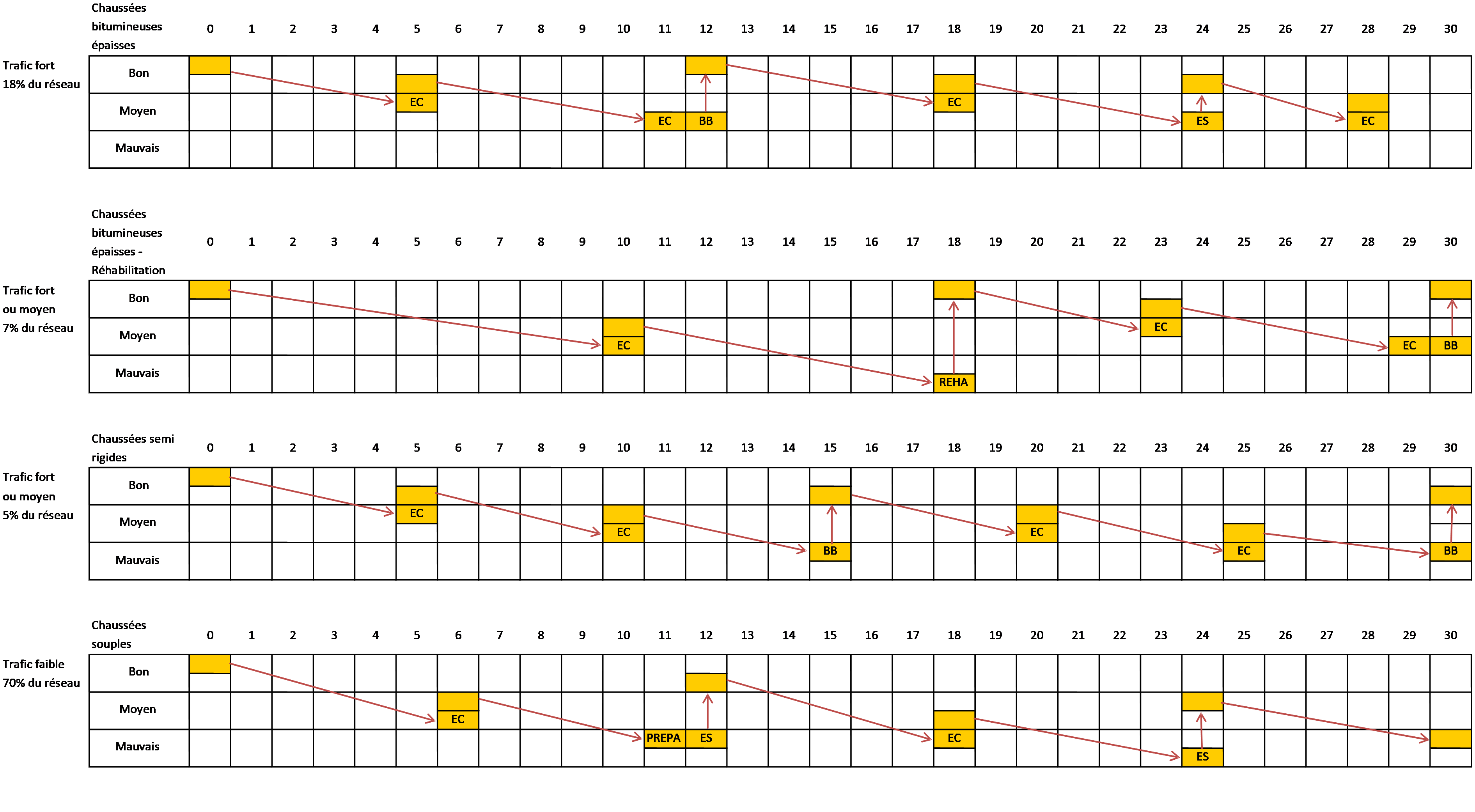
Asset Management Manual
A guide for practitioners!

Asset Management Manual
A guide for practitioners!
HUGUES ODEON, CEREMA, France
In France, the IQRN method has been used to manage the national road network for about 25 years. But this method is not fit for local road networks, and there is no other simplified method available. The main purpose of the GEPUR project was to provide a single and shared methodology for managing local road networks of Eastern France (ten departments). This methodology was written by officers who are in charge of the daily management of inter-urban and urban road network; the group was led by a representative of the Cerema. The final guide is composed of two parts, the first one for inter-urban networks, and the second one for urban roads. The frame of these two parts of the guide is similar, but the urban roads have specificities that influence their behavior and lifecycle, making it necessary to take them into account.
The aim of the GEPUR project was on one hand to provide a guide available for road network managers and their contracting authorities, and on the other hand to create a group of road network managers who will be able to share their know-how.
The GEPUR project allowed road network managers to build their own methodology together, taking advantage of the experience of each of them.
The GEPUR guide provides an open methodology. Its implementation to a specify network can be different according to the contracting authorities policy, the length of the network and the financial capabilities of the department or the city.
Regarding the asset management plan, the road network manager can opt for different strategies. Usually, the network is divided in three or four classes, and the chosen strategy varies according to the classes.
First, he has to choose between different priorities:
Then, he has to define different technics for maintenance. Each of them has benefits and limits which must be taken into account. For example, the routine maintenance can only maintain the quality level of the road for a few years, a surface dressing can restore the surface characteristics of the pavement (impermeability, skid resistance) and an asphalt concrete can moreover contribute to strengthen the structure.
It is then possible to define which technics will be used on each class of the network, what the maintenance frequency is for each of them, and what average percentage of surface will be treated with each technic. For example (Table 1.4.7.1), on the class 1 network, it could be possible to adopt 15% of very thin asphalt concrete, 15% of thin asphalt concrete, 20% of asphalt concrete, and 50% of surface dressing. On the class 3, these percentages can respectively be 0%, 25%, 0% and 60%, with 15% of specific asphalt concrete for flexible pavement. The durability of each technic also depends on the traffic of the road, and consequently of the class (Table 1.4.7.2).
Table 1.4.7.1: Average percentage of each technics per class (%)

Table 1.4.7.2: Average durability of the different maintenance technics (years)

Finally, the road network manager defines an asset management plan for each class of the network (Figure 1.4.7.1), describing the type of maintenance to be applied and its average durability for a long cycle life (30 years for example). It is then possible to evaluate the global cost of this asset management plan over 30 years, and to adjust it to the financial capabilities of the department.

Figure 1.4.7.1: Asset management plan depending on the type of structure (flexible, bituminous, rigid) and traffic
The GEPUR guide provides a tool to the road network managers and their contracting authorities, which allows them to define their own asset management plan, according to their quality policy and the financial capabilities. This guide is in two parts, the first one for inter-urban road network, and the second one for the urban road network.
Group. 2016. GEPUR Part 1 : inter-urban network. IDRRIM. Paris (Fr), June 2016. https://www.idrrim.com/publications/4484.htm
Group. 2018. GEPUR Part 2 : urban network. IDRRIM. Paris (Fr), to be published.
Odéon H., Jung V., Schang J.P. (2015) : GEPUR, une méthode de gestion d’un réseau routier par et pour les collectivités locales, AIPCR 2015, Séoul (Corée du Sud), nov.
Odéon H., Schang J.-P., Jung V. (2017) : GEPUR : a method for managing a road network by and for local authorities, JTTE, USA, Marc-Apr, pp. 104-115.